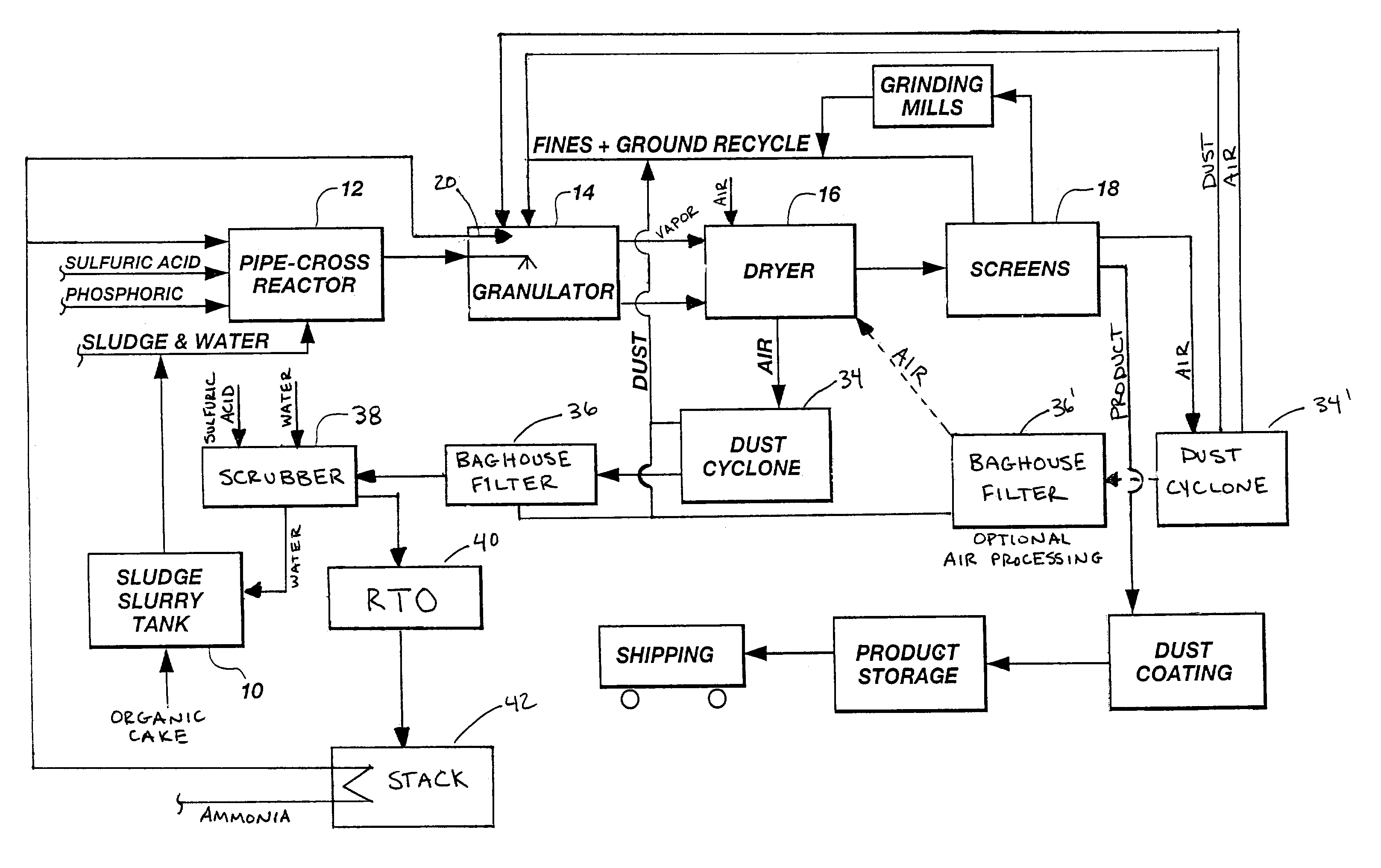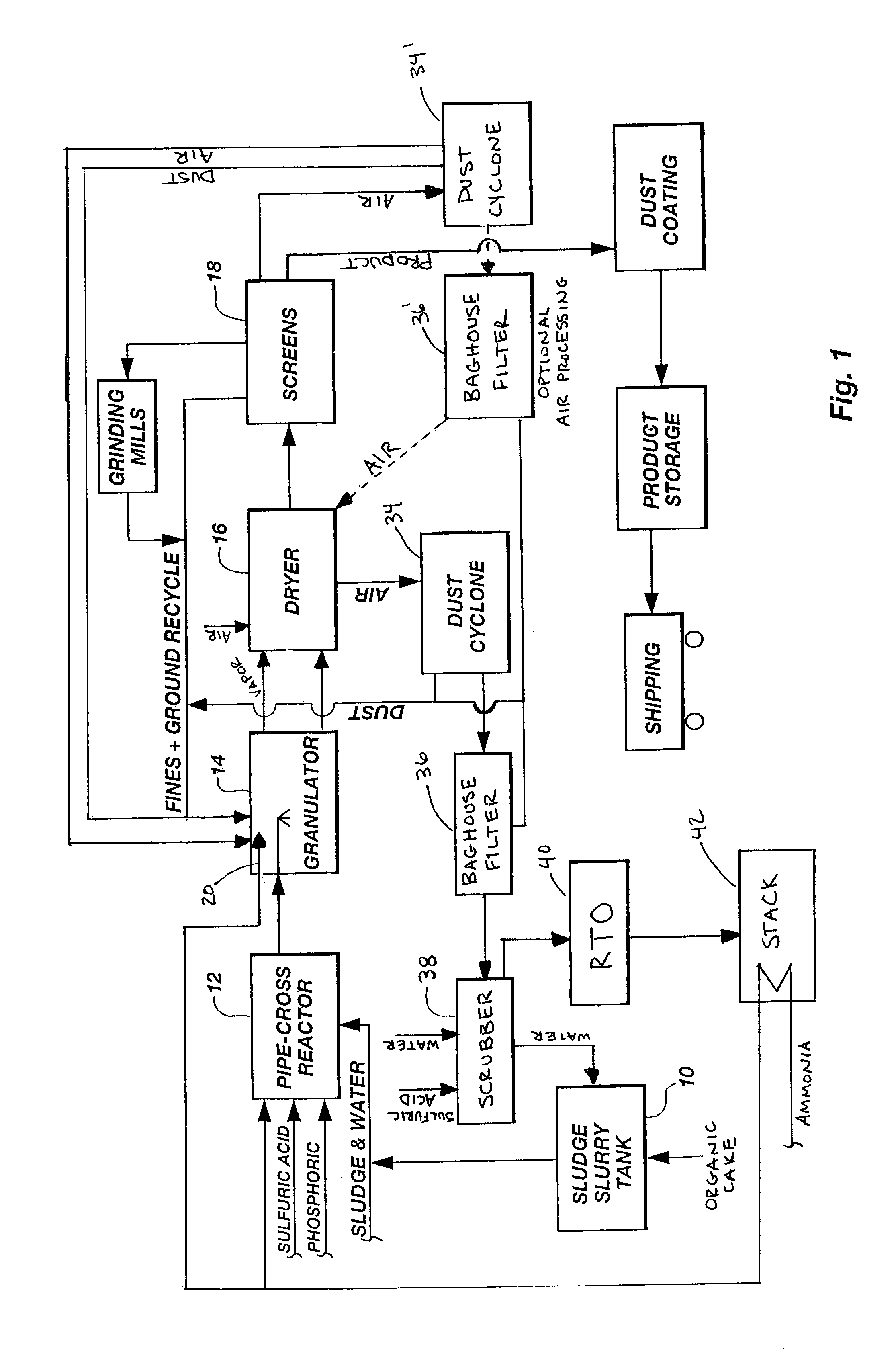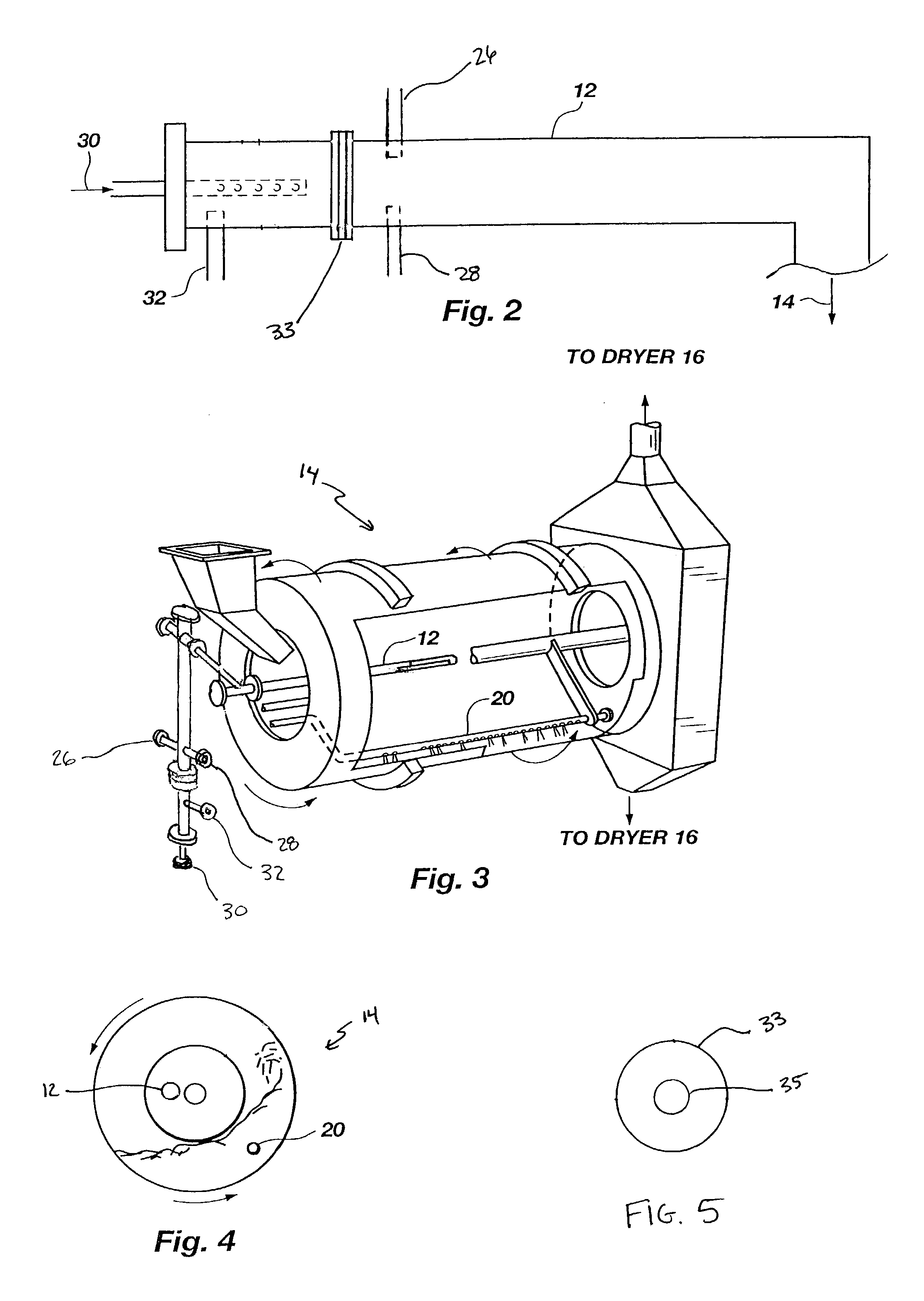Organic recycling with a pipe-cross or tubular reactor
a technology of pipe-cross or tubular reactor and organic recycling, which is applied in the direction of ammonium orthophosphate fertilisers, liquid-gas reaction processes, chemical/physical processes, etc., can solve the problem of difficult to obtain accurate flow rate control, the analysis of fertilizers is relatively low, and the problem of sewage sludge disposal is a significant world-wide problem
- Summary
- Abstract
- Description
- Claims
- Application Information
AI Technical Summary
Benefits of technology
Problems solved by technology
Method used
Image
Examples
example 1
[0056]In an agitation tank, 6700 kilograms / hour (7.4 tons / hour) of sewage sludge were mixed with 37 liters per minute (ten gallons / minute (gpm)) of scrubber water to form a slurry. The slurry was of such a consistency (a solids content varying between 10% and 27%) that it can be pumped with a positive displacement pump or other suitable pump to a pipe-cross reactor equipped to receive ammonia, sulfuric acid, phosphoric acid, sewage sludge, and water. The pipe-cross reactor had a diameter of approximately four inches and was forty feet long. The pipe-cross reactor terminated in a rotating drum granulator. The rotating drum granulator was six feet in diameter and twenty feet long.
[0057]The slurry was added to the pipe-cross reactor and reacted with 8.6 gpm 99.5% ammonia, 8.6 gpm sulfuric acid (93%), and 2.6 gpm phosphoric acid (54% P2O5). The temperature of the pipe-cross reactor (due to the exothermic reaction between the acid and the base) was maintained at about 149° C. (300° F.) w...
example 2
[0068]The process of Example I is repeated in a tubular reactor rather than a pipe cross reactor. In an agitation tank, 6700 kilograms / hour (7.4 tons / hour) of sewage sludge are mixed with 37 liters per minute (ten gallons / minute (gpm)) of scrubber water to form a slurry. The slurry is of such a consistency that it can be pumped with a positive displacement pump or other suitable pump to a tubular reactor equipped to receive ammonia, sulfuric acid, phosphoric acid, sewage sludge, and water. The tubular reactor preferably has a diameter of approximately 1.5 to 30 cm and a length of 2 to 10 meters, preferably 5 to 8 meters. The reactor terminates in a rotating drum granulator. The rotating drum granulator is six feet in diameter and twenty feet long.
[0069]The slurry is added to the reactor and reacted with 8.6 gpm 99.5% ammonia, and an acid solution containing 8.6 gpm sulfuric acid (93%) and 2.6 gpm phosphoric acid (54% P2O5). The temperature of the reactor (due to the exothermic react...
PUM
| Property | Measurement | Unit |
|---|---|---|
| length | aaaaa | aaaaa |
| length | aaaaa | aaaaa |
| length | aaaaa | aaaaa |
Abstract
Description
Claims
Application Information
 Login to View More
Login to View More - R&D
- Intellectual Property
- Life Sciences
- Materials
- Tech Scout
- Unparalleled Data Quality
- Higher Quality Content
- 60% Fewer Hallucinations
Browse by: Latest US Patents, China's latest patents, Technical Efficacy Thesaurus, Application Domain, Technology Topic, Popular Technical Reports.
© 2025 PatSnap. All rights reserved.Legal|Privacy policy|Modern Slavery Act Transparency Statement|Sitemap|About US| Contact US: help@patsnap.com



